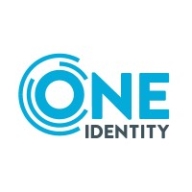

OpenText Identity Manager and One Identity Active Roles compete in the identity management sector. While OpenText offers competitive pricing and support, One Identity Active Roles stands out due to its robust features and higher perceived value.
Features: OpenText Identity Manager is noted for its comprehensive provisioning and compliance management, offering a well-rounded identity lifecycle management approach. It excels in data validation policies, role-based access control, and integration with SQL and Office 365. One Identity Active Roles, meanwhile, provides advanced Active Directory and Azure AD integrations, a single-pane-of-glass management system, and efficient dynamic grouping. Its delegation features and workflow automation further enhance its utility in hybrid environments.
Room for Improvement: OpenText Identity Manager could improve its deployment speed and ease of use. Enhancing scalability and optimizing its user interface would make it more appealing to a wider audience. Additionally, broadening its integration capabilities with other cloud services could enhance adaptability. For One Identity Active Roles, improvements could include expanding zero-trust security features and enhancing the user interface for greater intuitive use. There is also room for expanding its web interface capabilities beyond the current limitations.
Ease of Deployment and Customer Service: OpenText Identity Manager has a lengthier deployment process, but its extensive documentation support mitigates this drawback. One Identity Active Roles offers a quicker setup experience and provides interactive customer assistance, making it more appealing for those seeking expedited implementation and responsive support.
Pricing and ROI: OpenText Identity Manager provides a lower initial setup cost with cost-effective licensing options, resulting in significant ROI. Its value proposition is strengthened by its pricing model. Conversely, One Identity Active Roles, while having a higher initial setup cost, offers a substantial ROI through its advanced functionalities and integration processes, proving a valuable investment for companies prioritizing directory service enhancements.
| Product | Market Share (%) |
|---|---|
| One Identity Active Roles | 5.3% |
| OpenText Identity Manager | 3.1% |
| Other | 91.6% |


| Company Size | Count |
|---|---|
| Small Business | 7 |
| Midsize Enterprise | 2 |
| Large Enterprise | 17 |
| Company Size | Count |
|---|---|
| Small Business | 9 |
| Midsize Enterprise | 3 |
| Large Enterprise | 6 |
One Identity Active Roles is a highly regarded solution for Active Directory (AD) security and account management. One Identity Active Roles will enhance group, account, and directory management while eradicating the need for manual processes. The end result is a significant increase in the overall speed, efficiency, and security of the organization.
Using One Identity Active Roles, users can:
Managing accounts in AD and Azure AD can be tremendously challenging; continually keeping these important systems safe and secure presents an even greater challenge. Traditional tools can be inefficient, error-prone, and very disjointed. In today’s robust marketplace, organizations are finding it somewhat difficult to keep pace with the constant access changes in a hybrid AD ecosystem. Additionally, there are significant security issues to consider (government compliance, employee status/access changes, and other confidential business requirements). And, of course, there is a requirement to properly manage Active Directory and Azure Active Directory access in addition to managing all the other numerous SaaS and non-Windows applications that organizations use today.
Users can easily automate all of these tedious, mundane administrative tasks, keeping their systems safe and error-free. Active Roles ensures users can perform their job responsibilities more effectively, more efficiently, and with minimal manual intervention. Active Roles was created with a flexible design, so organizations can easily scale to meet your organizational needs, today, tomorrow, and in the foreseeable future.
Reviews from Real Users
A PeerSpot user who is a Network Analyst at a government tells us, “It has eliminated admin tasks that were bogging down our IT department. Before we started using Active Roles, if one of our frontline staff members deleted a user or group, it could take several hours to try to reverse that mistake. Whereas now, the most our frontline staff can do is a deprovision, which just disables everything in the background, but it's still there. We can go in and have it back the way it was two minutes later. Instead of it taking two hours, it only takes two minutes.”
Becky P., Sr Business Analyst at George Washington University, shares, “In addition, with the use of workflows and the scheduled tasks, we were able to automate and centrally manage a number of the processes as well as utilize them to work around other product limitations. Those include, but are not limited to syncing larger groups, which have 50,000 plus members, to Azure AD. We sync up to Azure AD using ARS. If we had not already had ARS in place, it would have been impossible for us to have done so in the time period we did it in. We did it in under six months. ARS probably saves us at least two weeks out of every month. It's reduced our workload by 50 percent, easily.”
OpenText Identity Manager provides event-driven capabilities with real-time synchronization and integration across multiple systems. Known for its flexibility, it offers features like password sync, access management, and directory synchronization.
OpenText Identity Manager is a comprehensive identity management platform, designed to support role-based provisioning and seamless integration of external systems. Its notable features include the Designer and Analyzer tools and robust self-service password management, enhancing its usability. Organizations leverage its event-driven architecture for real-time synchronization and detailed tracing, facilitating efficient identity management across different data sources. However, enhancements in Windows OS compatibility, user interface modernization, and cloud support are needed. Training remains crucial, given the system's complexity and unique language.
What are the Key Features of OpenText Identity Manager?In industries ranging from large corporations to local banks, OpenText Identity Manager supports account provisioning and access management, primarily through Active Directory integration. By connecting with applications like Oracle, PeopleSoft, and Office 365, it facilitates lifecycle and compliance management. Its deployment aids training and real-world application with single sign-on options for internal applications, providing a comprehensive identity management solution for diverse environments.
We monitor all User Provisioning Software reviews to prevent fraudulent reviews and keep review quality high. We do not post reviews by company employees or direct competitors. We validate each review for authenticity via cross-reference with LinkedIn, and personal follow-up with the reviewer when necessary.